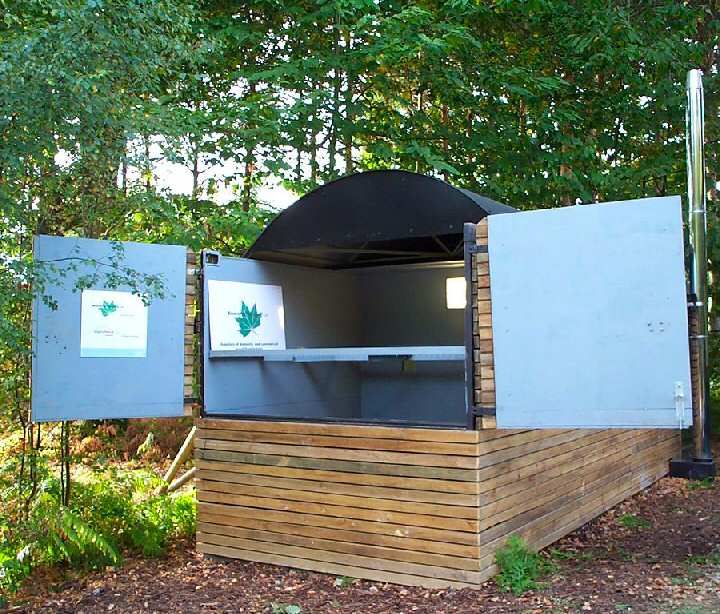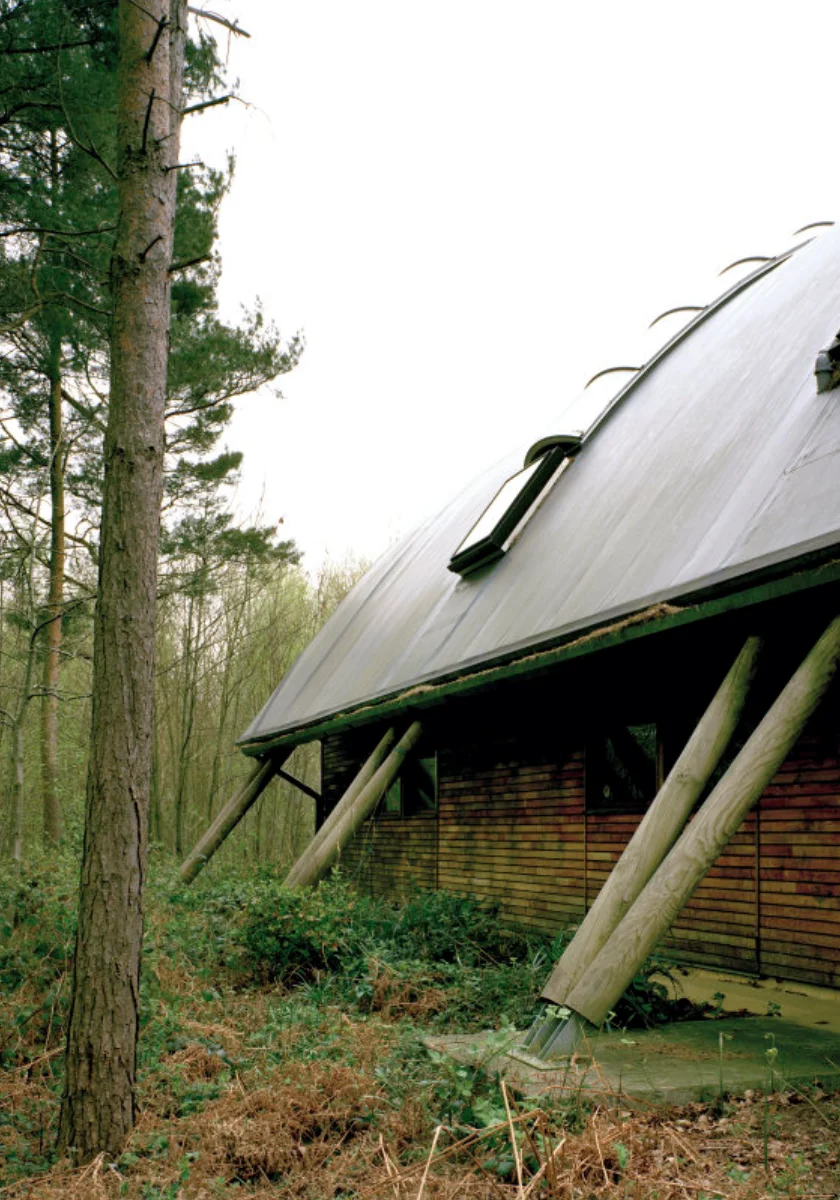The Woodland Enterprise Centre in Flimwell, East Sussex is both WoodNet’s base and an innovative (and award-winning) demonstration of what can be achieved with sustainable local timber resources. Constructed using low grade wood as the main construction materials, the Centre notably put chestnut at the forefront of a core, niche market across the country.
The Centre is not generally open to the public, we host events and courses, and the facilities are available for hire. The building includes office space for several rural business including the High Weald AONB (Area of Outstanding Natural Beauty). It is located in 20 hectares of mixed broadleaved / conifer and coppice woodland.
Architecture
Arising out of an architectural competition, the first of the buildings at the Woodland Enterprise Centre was completed in 2003 and demonstrates the use of locally-sourced wood in contemporary timber design. Part of the project’s aims was to demonstrate that chestnut can be used as a contemporary material.
The winning team, led by architects Feilden Clegg Bradley, used atelier one engineers and InWood Developments Ltd, to research the use of small-section timbers, rather than heavy beams, to support the structure.
Built from both softwood and hardwood timber harvested in the south-east, including a structural gridshell from locally-grown chestnut coppice, the WEC building demonstrates how timber can be used to create elegant and low-impact developments, which contribute to the local rural economy, and maintains our environment by stimulating new markets to support the restoration of the many neglected woodlands in southern England. A quarter of a century later, the building has proved to be durable and did not require chemical preservatives.
The Woodland Enterprise Centre has expanded to include a group of timber workshops and is now a showcase of sustainable construction, placed carefully within the mixed woodland in the High Weald of Sussex.
As well as the extensive use of engineered timber and modified wood products, the developments at WEC have used many low embodied energy materials, natural insulation materials (Warmcell, sheep’s wool and wood fibre). By demonstrating the use of locally-sourced timber species, such as Sweet Chestnut, Scots Pine, Douglas fir and European Larch, the WEC has demonstrated how development can be very low environmental impact, and also make a positive contribution to woodland management in the region.
Sustainable construction using local timber puts value back into the neglected coppices and plantations of south-east England, and provides a commercial incentive for more sustainable forest management. It’s estimated that 15 tonnes of chestnut would be needed to replicate the building, a quantity that could be provided by just 5 hectares of chestnut woodland, regenerating over and over again.
The buildings are heated by an automated wood-fuelled boiler system, and all the developments have been designed to be low-energy consuming, and recyclable at the end of its life.
Further timber developments are planned for this site, and partners are sought for developing this WEC timberbuild “cluster” at Flimwell.
Wood Chip Heating System
The Woodland Enterprise Centre is heated using woody biomass (wood chip) burnt in an automated 45kW Arimax boiler.
This Finnish system is housed outside the WEC building in a packaged container, integrating fuel store and boiler room, some 30m away from the building and connected by an underground heat-pipe.
35,000 kWh of heating is provided from small diameter roundwood sourced from the woodland managment operations (coppicing and thinnings) and chiped at the Centre, or supplied by contractors from nearly estates.




